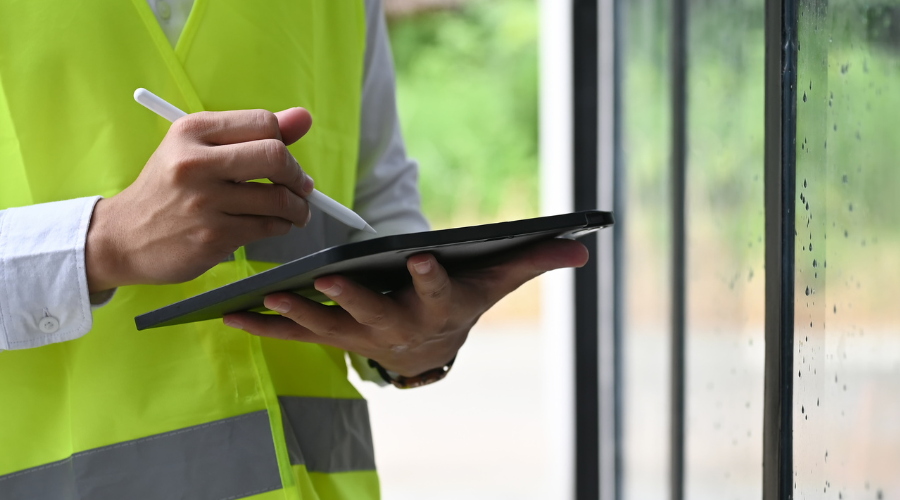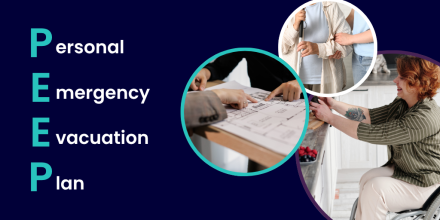Fire safety and compliance isn’t just a necessity when it comes to building safety regulations – it can truly be the difference between life and death for residents within your building. However, dealing with fire safety regulations can be daunting for those responsible for the wellbeing of residents within a residential building. As your local building, compliance and fire safety experts, Centrick has created a simple to follow 12-step fire safety checklist, tailored to low, mid and high-rise buildings. It’s your responsibility to ensure that your responsibilities are upheld but by following these steps, you canl help ensure that your building is compliant with the latest fire safety regulations and that residents are well-informed and protected.
What Parts Of The Fire Safety Checklist Do I Need To Follow?
Not all buildings need to adhere to the same fire safety checklist rules, with buildings of differing scales having different requirements.
- For low-rise buildings, please adhere to the first and second steps of the checklist.
- For existing mid-rise buildings, checklist steps one to four are relevant. New mid-rise buildings must adhere to the aforementioned steps, as well as step 8.
- For high-rise buildings, please take into account all twelve steps of the checklist.
12-Step Fire Safety Checklist
- Share fire safety instructions with residents and display in a conspicuous location:
As a first step for buildings of all scales, it is vital that all fire safety instructions, including evacuation procedures, are clearly communicated to all residents. This should be in the form of written notices placed in prominent areas such as entrance halls, communal corridors, and near exits where all residents and visitors can find them. These instructions must cover what to do in case of a fire, how to raise the fire alarm, and the locations of all key fire assembly points.
- Share fire door information with residents:
Inform residents about the purpose and importance of fire doors, emphasizing that they should not be propped open or tampered with on any occasion. You should also provide detailed guidance on how to check if a fire door is functioning correctly, including looking for certification marks and ensuring that seals and closers are intact.
- Conduct annual flat entrance (fire) door checks:
Beyond ensuring that all fire door information has been shared with residents, responsible parties must arrange for an annual inspection of all flat entrance doors to ensure they are fire-rated and compliant with current regulations. These checks should assess whether the doors close properly, have the correct seals, and are not damaged. Any issues should be repaired as soon as possible.
- Conduct quarterly common area (fire) door checks:
Although flat entrance doors should be checked annually, common area fire doors must be looked at four times a year. The relevant party must perform checks every three months on all fire doors in common areas, such as stairwells and corridors. These assessments should focus on inspecting the doors for signs of wear, ensuring they close fully, and confirming that any automatic closing mechanisms are functioning correctly. As in fire safety checklist step 3, any issues must be repaired promptly.
- Conduct monthly fire-fighting equipment checks:
Ensure that fire extinguishers, hose reels, and other fire-fighting equipment are inspected every month to confirm they are in good working order. The inspector should record the results of their checks and ensure any faults are addressed immediately.
- Conduct monthly lift check (lifts intended for use by firefighters, and evacuation lifts):
If your property has lifts designated for use by firefighters and evacuation purposes, these should be inspected on a monthly basis. Inspectors should pay close attention to verify that emergency communication systems, lighting, and power supplies are operational. In the event of any faults, you should report any defects immediately for repair.
- Install wayfinding signage (flat and floor numbers in stairwells and lift lobbies):
It is your duty to clearly mark all floors and flats with visible signage in stairwells and lift lobbies. For optimal visibility in the case of an emergency, you should ensure signs are legible in low light and from a distance to assist both residents and emergency services during evacuations.
- Install and maintain a secure information box:
Place a secure information box at the entrance of the building containing up-to-date contact details of the responsible person, a building plan, and floor plans. You must ensure that the box is accessible to fire and rescue services in the event of an emergency.
- Report defective lift and fire-fighting equipment to local fire service:
Contact your local fire service immediately if any lifts or fire-fighting equipment are found to be defective and you anticipate that the repair will take longer than 24 hours. You should provide details of the fault and expected repair time, and inform the fire service once the repairs are completed.
- Record monthly lift and fire-fighting equipment checks and share results with residents:
Maintain detailed records of all monthly checks on lifts and fire-fighting equipment, then share a summary of the results with residents to keep them informed about the safety measures in place and any ongoing maintenance work.
- Share external wall information (design, materials, risks, mitigations) with local fire service:
It is key that you provide your local fire service with detailed information about the building’s external walls, including the design, materials used, potential fire risks, and any mitigations in place. It is your duty to ensure this information is kept up-to-date and made readily available in case of an emergency.
- Share electronic building and floor plans with local fire service:
Supply your local fire service with electronic versions of the building and floor plans to assist them in emergency planning and response. Regularly update these plans to reflect any changes in the building’s layout or structure.
Download Your Fire Safety Checklist Below
Are you responsible for fire safety in a low, mid or high rise residential development in the UK? It is your duty to stay informed and remain diligent to keep your residents and visitors safe – that’s why we’ve created this simple fire safety download to help. Simply enter your details below to access your free download:










